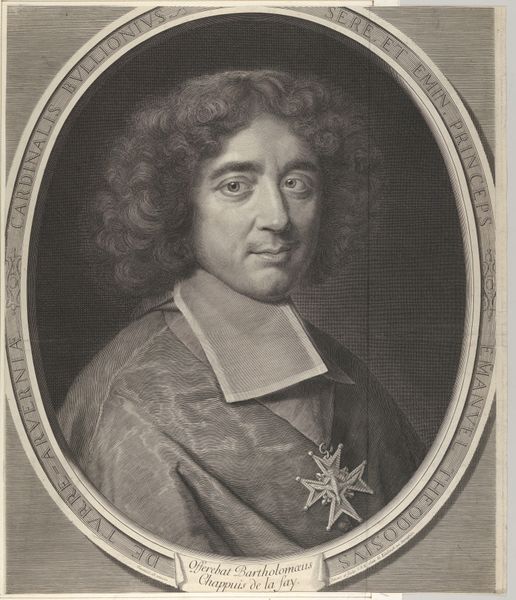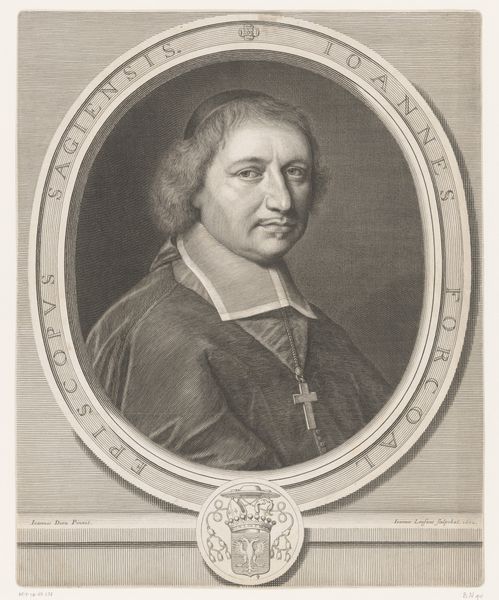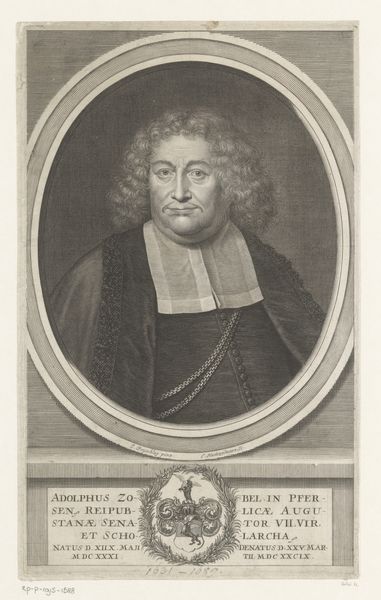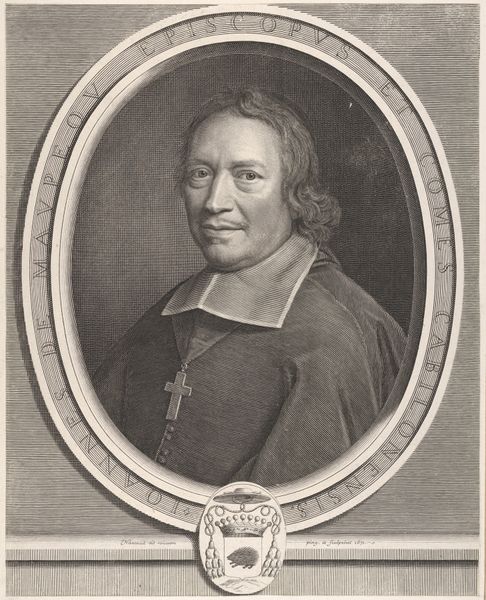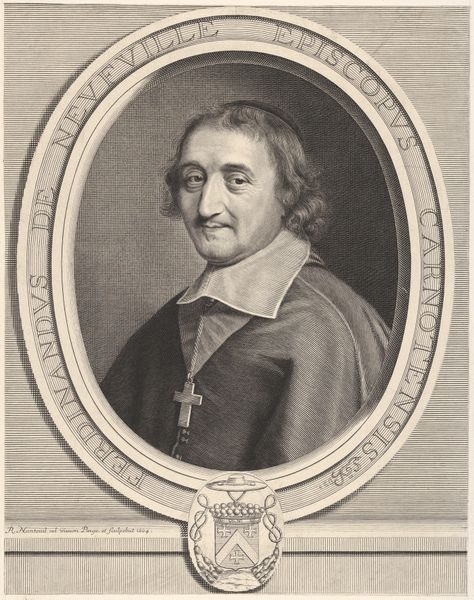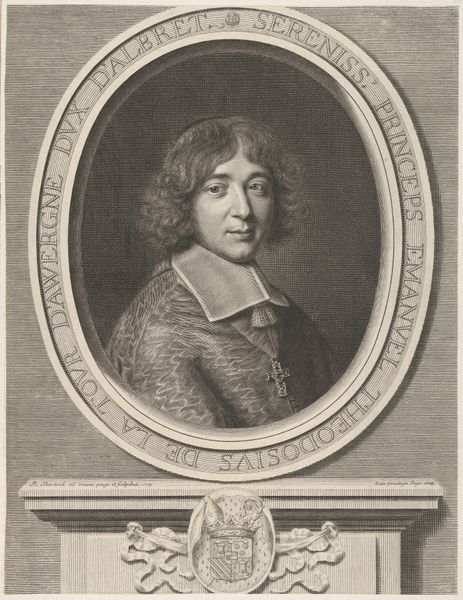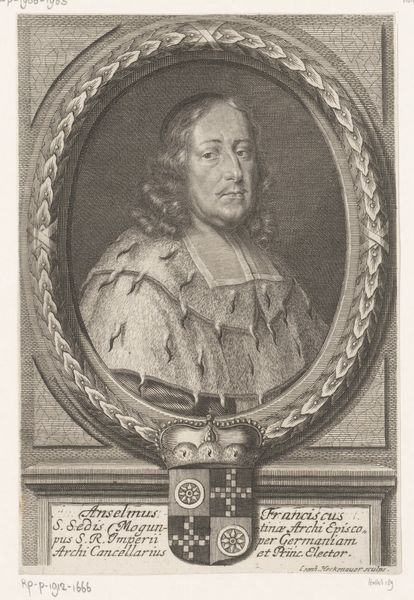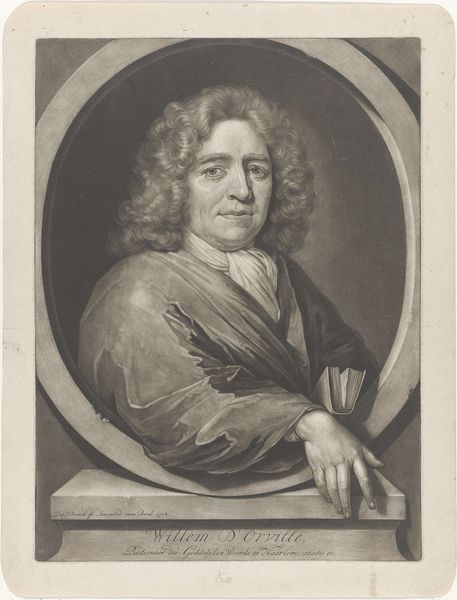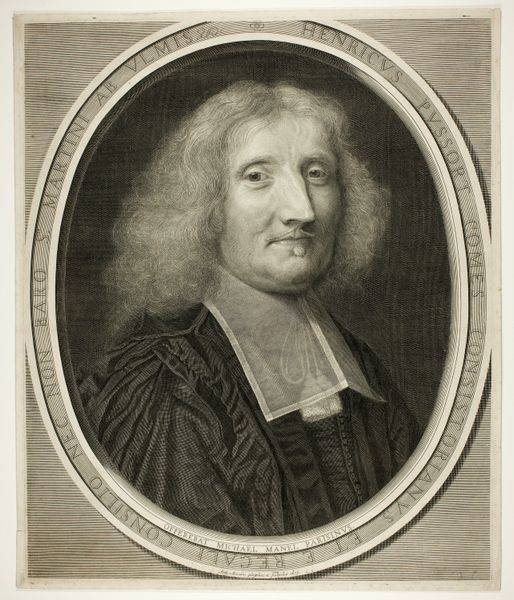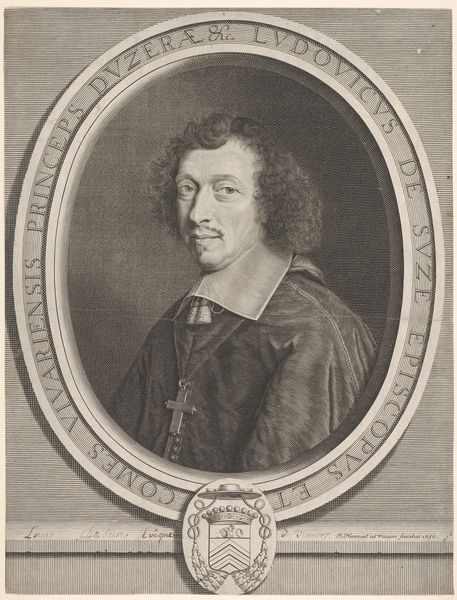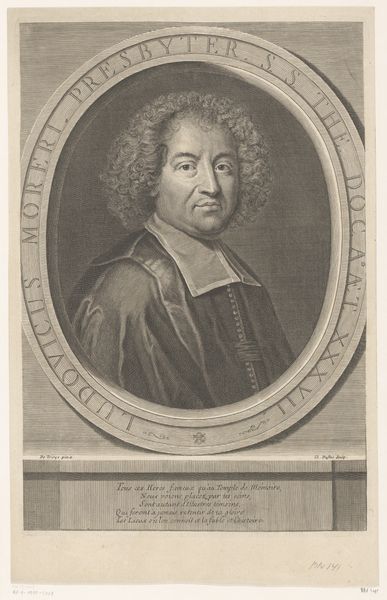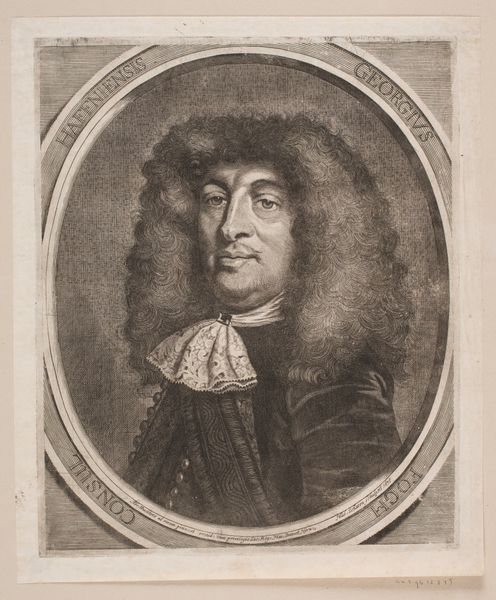
drawing, print, engraving
#
portrait
#
drawing
#
baroque
# print
#
portrait drawing
#
history-painting
#
engraving
Dimensions: Sheet: 19 5/8 × 16 13/16 in. (49.8 × 42.7 cm)
Copyright: Public Domain
Curator: Here we have Robert Nanteuil's 1678 engraving, "Le cardinal Pierre de Bonzi," a striking portrait that captures the prelate in fine detail. It's currently housed at the Metropolitan Museum of Art. Editor: My first impression is that the image has a very serene yet somewhat world-weary quality to it. The subject's gaze seems knowing, perhaps burdened by the weight of his position within the church. Curator: Yes, there's definitely a sense of gravity. Nanteuil was a master of capturing not just physical likeness but also the inner character of his subjects. Look at the meticulous lines that define his features—the subtle shading that conveys a sense of volume and presence. This isn’t just a portrait; it's an icon. The lettering forms an elaborate border reinforcing this point. Editor: Indeed, the engraving serves as a form of propaganda, almost. Cardinals wielded considerable political power, so image management was essential. Consider the carefully crafted image; the flowing hair softens his look while his garments of office mark rank. His subtle expression would have signaled sophistication. Curator: Exactly! It reinforces the idea of the Cardinal as a figure of authority and wisdom. We can compare that symbolic representation with historical texts and traditions and explore the complex interplay of power, faith, and artistry within that era. Editor: This begs the question of accessibility in these kinds of commissioned portraits. What did it mean for the non-elites consuming this image, versus today? Were the engraved copies affordable? Did people relate to Pierre Bonzi at all, outside the confines of religious ceremony? Curator: Printmaking allowed for wider distribution, absolutely—expanding the cardinal's reach. While the original intent served propaganda, the symbolism endures even today, influencing how we perceive individuals in positions of power. That blend of art, religion, and authority creates lasting visual frameworks. Editor: It's powerful how these images continue to influence us. Examining historical depictions lets us engage in crucial conversations about the ever shifting relationships between image, power and identity, as well as religion in this case. Curator: Agreed; observing enduring symbols unveils timeless meanings, enriching both cultural history and human perception itself. Editor: For me, it encourages questions regarding the influence of power—something perpetually necessary.
Comments
No comments
Be the first to comment and join the conversation on the ultimate creative platform.

